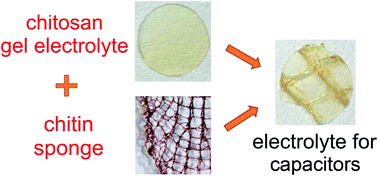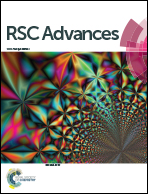A novel chitosan/sponge chitin origin material as a membrane for supercapacitors – preparation and characterization
Abstract
A new chitosan/sponge chitin – based membrane (CS/CH membrane) was prepared via the casting method for the first time. We used the demineralized skeleton of the marine demosponge Ianthella basta as a source for a chitinous network. The obtained membrane was immersed in 1 M LiOAc (lithium acetate) solution and tested in an Electric Double Layer Capacitor (EDLC) cell. For comparison, chitosan (CS) with LiOAc solution was also tested. The studies performed indicated good properties of the CS/CH membrane. Very good mechanical stability (for use in electrochemical capacitors) and electrochemical properties of the CS membrane were achieved by the addition of chitin isolated from the sponge to the polymer matrix. Their electrochemical performances were tested in EDLC cells by cyclic voltammetry (CV), electrochemical impedance spectroscopy (EIS) and galvanostatic charge/discharge. The specific capacitances of the tested capacitor cells were found to be approximately 97 F g−1 and 88 F g−1 with CS/CH and CS membranes (in the voltage range 0–0.8 V), respectively.


 Please wait while we load your content...
Please wait while we load your content...